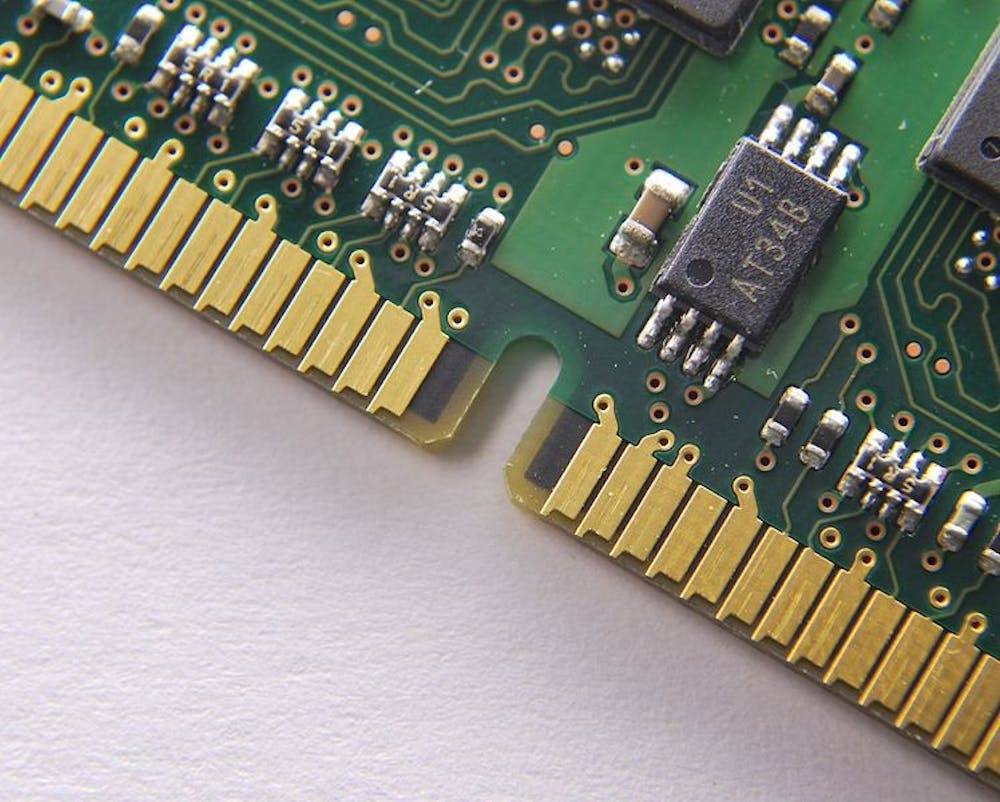By ELIZABETH LIU Staff Writer
Today’s electronic memory chips are relatively fast compared to the first models from the mid-1900s. However, researchers from Oxford University have discovered a way to store memory on a light-based chip, which could greatly outshine the speeds of today’s electronic chips.
Modern computers are held back by the relatively slow speed of memory recall. In recent years memory improvement has focused on density (the ability to store more data in less space) instead of transfer rates (the rate at which data can be moved from one area to another).
On the other hand, the speed of processors (the part of the computer that manipulates data) has increased significantly.
Since transfer speeds have not increased, faster processors have to spend an increasing amount of time idle and waiting for data to be fetched from memory.
A given processor is limited to the rate of transfer allowed by the bottleneck no matter how fast it can work. This is known as the von Neumann bottleneck.
One way to overcome the von Neumann bottleneck would be to change the composition of a memory chip. Electric chips function by moving electrons through different parts of the chip, such as logic and memory circuits, which manipulate and store data, respectively.
These electrons are funneled through metal wires and bump into each other which slows them down and generates heat that must be siphoned away. Scientists have been interested in streamlining this process for decades and have been toying with the idea of a light-based or photonic chip.
Unlike electrons, photons can travel together at high speeds with no resistance. Some already developed photonic chips have optical lines and memory circuits instead of metal. Although these chips operate at much faster speeds, there are some serious drawbacks — these types of memory circuits can only store data when there is a steady supply of power. The data disappears when the device is turned off.
However, this may soon change. Researchers from Oxford University, in collaboration with scientists at Karlsruhe, Munster and Exeter, have developed the world’s first entirely light-based memory chip that can permanently store data.
The device is made out of a phase-change material called Ge2Sb2Te5 (GST), which is the same material used in rewritable CDs and DVDs to store data. The researchers created a light-carrying device with a small section of GST called a waveguide on top of a silicon nitride ridge. GST can be made in a glass-like amorphous state or a metal-like crystalline state with optical pulses of different intensities. Intense pulses of light can be sent through the waveguide to change the state of the GST by momentarily melting and then quickly cooling thus causing the material to assume an amorphous state.
A slightly less intense pulse can change the GST to a more crystalline state. The data can be read when light with a much lower intensity is sent through the waveguide — the difference in the GST states affects how much light is transmitted to the reader. This offers a solution to the data retention issue that previous photonic chips had. These new chips are able to store data in the long-term.
The researchers also discovered that they could send multiple wavelengths of light through the waveguide simultaneously, which results in the ability to both read data and store data with just one pulse of light. This feature could result in providing virtually unlimited bandwidth because thousands of bits can be read and written at the same time.
Currently the researchers are interested in developing an effective electro-optical interconnect that would allow memory chips to interact with processors and other components using light. This could allow for much faster and more efficient data transfer and processing compared to today’s standards.





